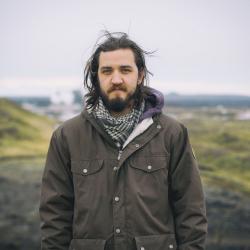In the old folk stories, the Huldufólk were a race of “hidden people” who lived alongside Icelanders, yet remained outside their field of vision. These magical folk were generally portrayed as either kind or cruel, and only visible under special circumstances, such as on Christmas Day. It’s easy to draw an analogy between the Huldufólk of yore and Iceland’s current immigrant population, which remains present but tucked away, mostly appearing in news stories as asylum seekers or perpetrators of crime—victims or villains.
Immigrants comprise around 8-9% of Iceland’s population, and a 2013 report by the Joint Committee of the Nordic Social Democratic Labour Movement (SAMAK) found that immigrants had higher work participation than Icelanders. In other words, a greater portion of immigrants pay income taxes than natives, and yet they largely exist on the fringes of society, without its support. There are no immigrant MPs in parliament, funds awarded to immigrant issues are shrinking, and immigrants’ participation in Icelandic society at large is dependent upon their speaking the language.
Addressing this issue are Tomasz Chrapek and Aleksandra Orzylowska, the chair and vice-chair of Projekt Polska. Their NGO was founded to introduce Polish culture in Iceland, and has now expanded to spread their focus to all immigrants to the island. Their latest project is to document through photos the ways in which immigrants feel excluded, in the hopes of having an impact on society at large.
What inspired you to start this project?
Tomasz: We wanted to draw people’s attention to an issue that we feel some are not even aware of. We think this is because of a lack of communication between locals and immigrants, with their ideas of our situation based on little available data. We want to put the situation into perspective, and show what discrimination feels like from the other side.
Aleksandra: And to do that properly, we have to get first-hand accounts from immigrants, see the problems they face, and then communicate them to the general public. Tomasz came up with the idea that it would be excellent to try to use this metaphor of hidden people to show this—it’s tied into the consciousness of Icelandic society and provides a good starting point to talk about immigrants and their issues.
T: The impression I get from immigrants in relationships with natives, is that they show them a parallel universe that exists in their own country, one that they aren’t aware of, and we want to bring this out into the open.
A: Which is like the hidden people. Everyone is curious about them, wondering if they really exist, what their life is like, and who they are. These hidden people do exist, and we want to give locals the opportunity to get to know them as they really are, not in the shallow way they often are portrayed.
T: People that don’t speak Icelandic aren’t just tourists that come here, but also people that have made their home in Iceland.
How do you envision the exhibition?
T: It’s all in an early stage right now, but we are trying to nail it down to about ten staged photographs that can illustrate the particular areas of social interactions and social activities where immigrants can find themselves lost in Icelandic society. It’s very rough, but the categories we had in mind were education, language, religion…
A: And humour, you can’t forget that [laughs]. It doesn’t all need to be dramatic or traumatic, you know. What we want to do is base the pictures on real stories. The categories aren’t set in stone, though, and the results will depend on the stories we get. We have some ideas ready, but not enough.
T: It has to be very visually pleasant and artistic.
A: And to touch the heart. That’s why we invited artist Þorgerður Jörundsdóttir to collaborate with us. Her idea was to use the Icelandic Sagas to frame the scenes.
T: We have a lot of foreigners willing to participate in the project to act the scenes out—having their faces is really key to the project. Photographer Hörður Sveinsson has offered to take the photos for us, and Dr. Terry Gunnell [a leading folklorist at the University of Iceland] wants to contribute.
A: But before any of them can get to work, we need to collect more testimonials. We don’t just want to open an exhibition, but to change people’s perspective.
T: Yes, it’s a social campaign, to show that there are people here from different countries, races, and cultures. We are not only visitors, we also live here. This is actually one of the project’s core ideas, to show that those are the people that are here to stay and have been for years. As the metaphor goes, hidden people were around as long as Icelandic people, just like with the foreigners at present. We would like to show that.
A: There are immigrants, and they are a part of society.
—
Those who have experienced being excluded in one form or another in Iceland and are interested in contributing their stories for the project can send their submissions to hiddenpeople@projektpolska.is.
Buy subscriptions, t-shirts and more from our shop right here!


















